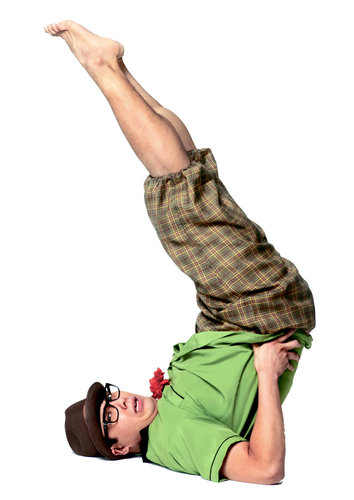If you are having trouble viewing this e-mail, click here for web version.
 |
Vrtti January 2012 – Yoga and Popular Culture |
 |
|
Dear Yoga Friends, It is incredible that perhaps 20 million people in the United States today practice yoga in some form. Given that large number, it is less incredible that yoga has made its way into pop culture to the extent that everyone has some opinion, belief, or relationship to it. The surge in popularity of yoga is due to perceptions that it can improve flexibility, strength, and overall fitness. Our culture, preoccupied with the body, keys in to the physical aspects of yoga, and though some may find emotional/spiritual aspects intriguing, few are drawn to yoga for that reason, at least initially. Some are drawn to yoga to heal injury or illness when other forms of therapy have not been successful. There is much money to be made on any activity that draws millions. Yoga attire, mats, classes, workshops, retreats, training programs, conferences, literature - what a huge market! Recently the New York Times published an article that challenges the appropriateness of yoga for the masses. The article cites misleading anecdotal cases and statistics on how dangerous yoga can be. Why publish an article like this? Ka-Ching. When 20 million people are engaged in an activity and you challenge its effectiveness or safety, that's going to attract a lot of attention, which for a newspaper equals subscriptions. Furthermore, it provides a platform for the proponents to garner further attention for their own gain. Here are some examples from this article of yoga injuries that should scare people off: (1) someone doing sarvangasana (shoulder stand) on a bare wood floor with no support sustained neck injury; (2) someone doing vajrasana (sitting on heels, knees on floor, toes curled forward) for hours sustained a nerve injury in the foot; (3) someone jerking themselves suddenly into a deep twist broke a rib. Duh (sorry, no Sanskrit equivalent :-). Yes, yoga carries risk when done without awareness or when the ego is in the driver's seat. But the whole point of yoga is to do it with the utmost awareness and take the ego out of the driver's seat. Injury comes when ego drives us past today's limit, or when we are not keeping our attentions on the actions that are important for making an asana safe. Do people get injured doing yoga? Of course. But people get injured doing everything. And at least in the Iyengar yoga practice that I am familiar with, things move relatively slowly, are controlled, and you have a wealth of alternatives and tools to guard against injury. Can you say that about other popular activities like running, tennis, basketball, or skiing, where knees, achilles tendons, hips, backs, shoulders, and necks sustain large numbers of injuries yearly? To put it another way, send those 20 million people out to do some other activity tomorrow and see what happens. But the popular culture has very little to say, positively or negatively, about the sense of calm and freedom that emanates from the practice of yoga, the emotional releases that can occur, or the spiritual path that beckons in those quiet moments when the self recedes, and an awareness begins to build of something large and miraculous. As crazy as it sounds, there is little money to be made in this arena. Your views on this topic are greatly welcomed, as always. Namaste, Chad |
|
|
